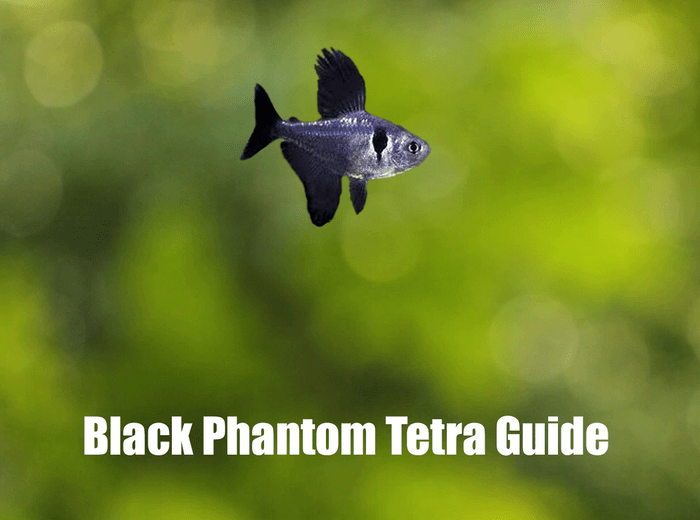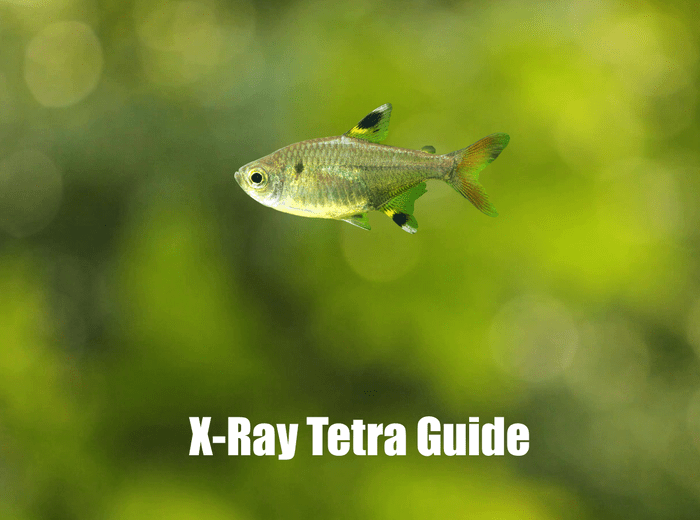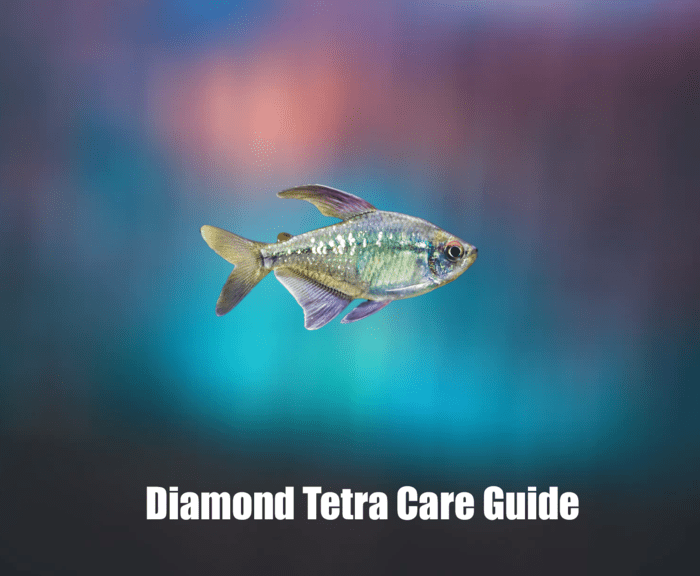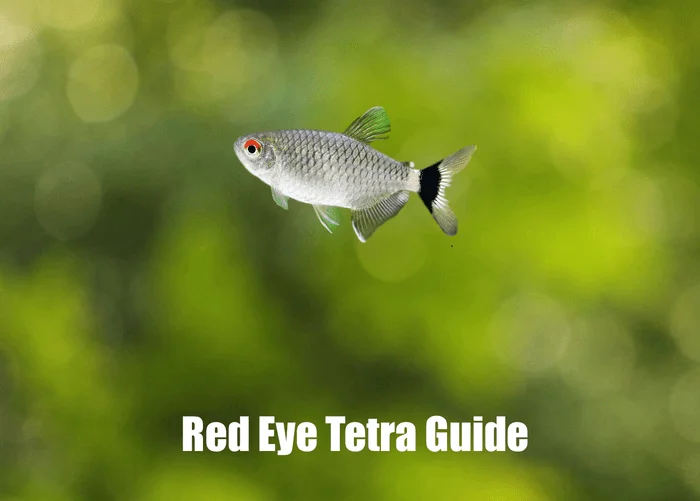Complete Care Guide for African Moon Tetra: Creating a Unique Aquarium
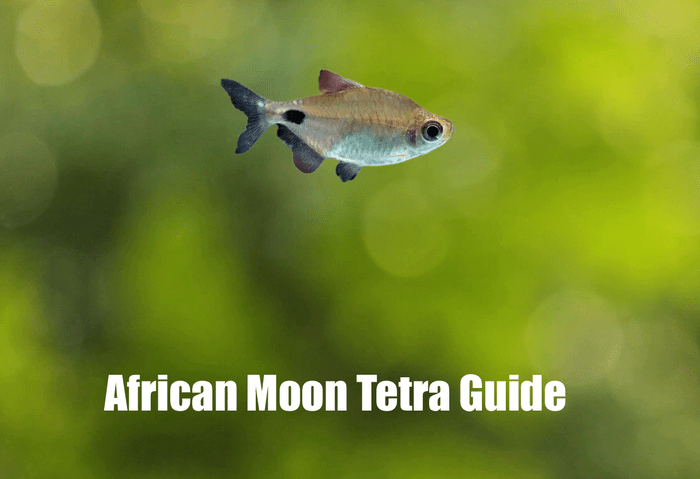
Introduction
Considering the African Moon Tetra for your aquarium or looking to enhance their care? This detailed guide is tailored for aquarists of all levels. The African Moon Tetra, known scientifically as Bathyaethiops caudomaculatus and prized for their unique colors and peaceful nature, are a captivating addition to freshwater tanks. This guide will cover everything you need to know to ensure your African Moon Tetras thrive.
Understanding African Moon Tetra
Origin and Characteristics
African Moon Tetra, originating from the densely vegetated waterways of Africa, are a fascinating species in the aquarium hobby. These moderately-sized fish, usually reaching about 2 inches in length, are known for their unique, silvery-blue bodies that add a mysterious charm to any aquarium setting. Their most distinctive feature is the iridescent hues that shimmer across their scales, coupled with a dark spot on the dorsal fin, which enhances their visual appeal.
The males of the species become particularly striking during the breeding season, showcasing more vivid colors and slightly more elongated fins. What adds to their allure for aquarists is their tranquil demeanor and their ability to adjust to various tank environments with ease. They are peaceful swimmers and tend to move gracefully in the lower to middle layers of the water, often seen exploring the tank in a serene manner, which brings a tranquil and harmonious element to the tank.
Behavior and Tank Mates
African Moon Tetras are peaceful, schooling fish and should be kept in groups of at least six. They are ideal for community tanks with other peaceful, similarly sized fish. Their serene swimming and non-aggressive nature make them a favored choice among aquarists. Some common and suitable tank mates for African Moon Tetras include:
- Other Peaceful Tetras: Such as Neon or Rummy Nose Tetra.
- Dwarf Cichlids: Like Apistogrammas, which are also peaceful.
- Peaceful Barbs: Like Cherry Barbs.
- Dwarf Corydora: Peaceful bottom dwellers.
- Small Rasboras: Harmonize well in a community tank.
- It’s important to choose tank mates that are peaceful and won’t outcompete the African Moon Tetra for food
Remember, while choosing tank mates, consider factors like water parameters, size, temperament, and dietary needs to ensure a harmonious aquarium. Also, always introduce new fish gradually and monitor their interactions to ensure a peaceful environment. 🐠
Setting Up the Perfect Tank
Tank Size and Conditions
A 20-gallon tank or larger is recommended for a school of African Moon Tetra but they will benefit from some more swimming room. These Tetra thrive in specific water conditions that mimic their natural habitat. Additionally, maintaining ideal water parameters is the key to ensuring their health and well-being in a home aquarium. Here’s a breakdown of their ideal water conditions:
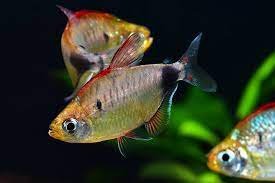
- Temperature: 72°F to 79°F (22°C to 26°C). This tropical temperature range helps in promoting their natural behavior and vibrant coloration.
- pH Level: 6.0 and 7.5, slightly acidic to neutral water conditions.
- Water Hardness: African Moon Tetras prefer softer water conditions, with a general hardness between 4 to 8 dGH. This mimics their natural habitat conditions and supports their physiological needs.
- Water Quality: Like most fish, African Moon Tetra require clean and well-oxygenated water. Regular water changes (about 25% per week) are recommended to maintain good water quality. It’s crucial to remove any chlorine or chloramine from tap water before adding it to the tank.
- Nitrate Levels: Keeping nitrate levels low is important, as high levels can be harmful. Aim to keep nitrates below 20 ppm.
- Ammonia and Nitrite Levels: Both ammonia and nitrite should always be at 0 ppm. Even small amounts of these can be toxic to fish.
It’s important to use a reliable aquarium test kit to regularly monitor these water parameters. Sudden changes in water conditions can stress or harm your fish, so any adjustments should be made gradually. Maintaining stable water conditions is key to the health and longevity of your African Moon Tetra. 🌊
Lighting and Decor
- Moderate Lighting: Mimic their natural, slightly shaded habitat with moderate lighting.
- Day/Night Cycle: Maintain a regular cycle, typically around 10-12 hours of light per day.
- Plants: Dense vegetation, including tall and floating plants, to provide hiding spaces and a natural environment.
- Substrate: A dark-colored substrate can enhance the natural colors of the fish.
- Hiding Places: Include driftwood, rocks, and caves for shelter.
- Open Swimming Space: Ensure ample free-swimming space to accommodate their active swimming behavior.
Diet and Nutrition
Feeding Habits
African Moon Tetra are omnivorous. Therefore, a balanced diet including high-quality flake foods, frozen or live brine shrimp, daphnia, and occasional vegetable supplements will keep them healthy.
Feeding Schedule
Offering food in small amounts twice a day is ideal. This mimics their natural feeding habits and helps prevent overfeeding, which can lead to water quality issues.
Frequently Asked Questions
Given proper care African Moon Tetra can grow up to 2 inches in length.
It’s recommended to keep African Moon Tetras in groups of at least 6 for their well-being.
African Moon Tetras are not aggressive and are known for their peaceful temperament.
Health and Wellness
Breeding Tips
Breeding African Moon Tetra can be a rewarding experience, but it requires a bit of preparation and understanding of their breeding behavior. Here are some tips to help you successfully breed African Moon Tetra:
- Breeding Tank: Set up a separate tank with soft, slightly acidic water (pH around 6.0-6.5) and a temperature of about 77°F (25°C). Dim lighting and fine-leaved plants or spawning mops are recommended.
- Identifying and Introducing Breeding Pairs: Choose healthy, mature fish (around 6-12 months old). The males are typically brighter and have slightly longer fins. Introduce them into the breeding tank, ideally one male to every two females.
- Condition the Breeders: Feed them high-quality live or frozen foods to encourage spawning.
- Spawning Process: Introduce a well-conditioned pair or small group. Spawning usually occurs in the morning.
- Post-Spawning Care: Remove the adults post-spawning to prevent egg predation. The eggs typically hatch in about 24-48hrs.
- Rearing Fry: Start with infusoria or liquid fry food, then graduate to baby brine shrimp as they grow.
Remember, patience is key when breeding fish. It might take a few attempts before you see success. Keep a close eye on the water parameters and the health of both the adult fish and the fry to ensure a successful breeding experience. Good luck!
Common Health Concerns
African Moon Tetras, while hardy, are not immune to the health challenges common among tetra species, such as ich (white spot disease) and fungal infections. These conditions can be particularly problematic for African Moon Tetras, considering their unique coloration and peaceful demeanor. To ensure their health, maintaining optimal tank conditions is crucial. This includes conducting regular water changes, keeping water parameters (pH, temperature, and hardness) stable, and providing a well-balanced diet to enhance their immune system.
Their preference for soft, slightly acidic to neutral water should also be considered to mimic their natural African waterways habitat. Vigilant monitoring of the tank for signs of stress or disease, coupled with prompt action, is essential for their care. Early detection and treatment are vital to prevent these common health issues from worsening. By ensuring a clean, stable environment and catering to the specific needs of African Moon Tetras, you can fully appreciate their serene beauty and behavior in your aquarium. Learning about effective tank management is key to keeping your African Moon Tetras healthy and vibrant.
Life Expectancy
With proper care, these tetras can live up to 3-5 years. Regular monitoring and maintenance of the tank environment are key to their longevity
African Moon Tetra Wrap Up
In conclusion, African Moon Tetras add a shimmer of silvery-blue and tranquil energy to any freshwater aquarium. By adhering to the guidelines outlined in this comprehensive care guide, you can create a thriving environment that meets the unique needs of your African Moon Tetras. These fish, with their iridescent hues and calm schooling behavior, not only elevate the aesthetic appeal of your tank but also contribute to a serene aquatic ecosystem. The foundation of a vibrant and healthy aquarium is rooted in providing a stable and nurturing environment. Ensuring your African Moon Tetras are given the appropriate water conditions, a varied diet, and consistent care will guarantee that these enchanting fish continue to flourish, bringing tranquility and beauty to your aquarium with their gentle grace and allure.
Share Your Tetra Experiences
Do you have any stories or tips about your Tetra tank? Share them in the comments below!
Help Others Discover This Guide
Navigate the Tetra in your tank with confidence. This guide is your pathway to creating a vibrant and healthy aquatic showcase. Enjoy the dazzling colors and lively nature of these unique fish!


